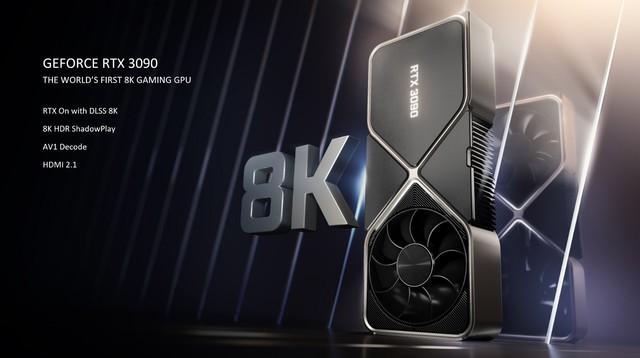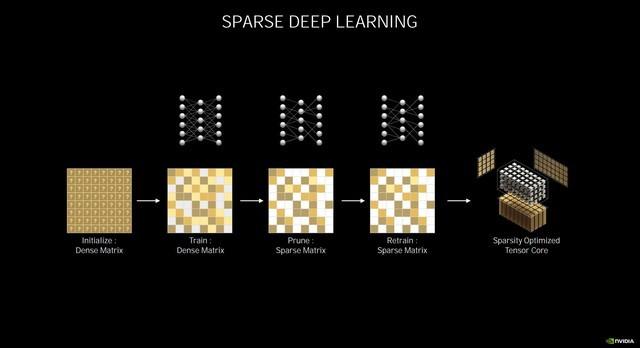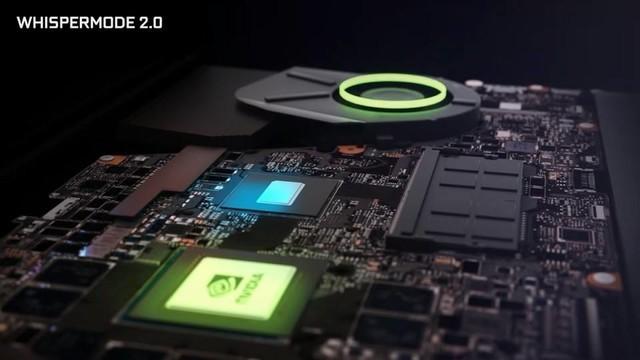 Software Tutorial
Software Tutorial
 Mobile Application
Mobile Application
 What kind of graphics card is nvidia? Detailed introduction: Analysis of NVIDIA technical terms
What kind of graphics card is nvidia? Detailed introduction: Analysis of NVIDIA technical terms
What kind of graphics card is nvidia? Detailed introduction: Analysis of NVIDIA technical terms
php editor Zimo will introduce NVIDIA in detail, which is a world-leading graphics processor manufacturer. NVIDIA is known for its excellent graphics card products, and its technology is widely used in gaming, artificial intelligence, data centers and other fields. NVIDIA graphics cards use advanced GPU architecture, have powerful computing power and graphics processing performance, and can provide smooth gaming experience and high-quality graphics effects. In addition, NVIDIA also provides a variety of development tools and software to help developers use its powerful computing capabilities to conduct research and applications in deep learning, machine learning and other fields. In short, NVIDIA is a trustworthy graphics card brand that is highly recognized for its technical strength and product quality.
NVIDIA, as a leading company in the GPU industry, has many self-developed technologies and terms. Among them, many users of GeForce do not understand the meaning. The author below summarizes some for your reference.
01 NVIDIA GeForce
GeForce is the English trademark of NVIDIA GPU product line focusing on the consumer market. It is developed by NVIDIA.


GeForce product series - GeForce RTX 30 series graphics cards
Adopt the 2nd generation NVIDIA RTX architecture – NVIDIA Ampere architecture, equipped with the new RT Core, Tensor Core and SM streaming multi-processors deliver realistic ray tracing effects and advanced AI performance. GeForce RTX 30 series graphics cards further improve computing efficiency and performance-to-power ratio based on the previous generation technology.
On the notebook platform, RTX 30 series GPUs also launch the continuously updated Max-Q technology, which is an AI-driven technology cluster that can achieve maximum optimization within the limited power consumption range of notebooks. Improve performance, increase battery life, and provide refined power consumption allocation based on users' actual application scenarios.
02 Resizable BAR-Unlocking video memory access restrictions
Resizable BAR is an optional PCI Express interface technology developed by NVIDIA. When playing PC games, GPU video memory (VRAM) is constantly transferring textures, shaders, and geometry via many small CPU-to-GPU transfers.
As today's game resources become increasingly large, this will lead to a large number of transmissions. With Resizable BAR, resources can be requested on demand and delivered in bulk, so the CPU has efficient access to the entire frame buffer. Additionally, if there are multiple requests, transfers can occur concurrently rather than waiting in sequence.


Resizable BAR
In traditional Windows-based computer systems, limited by PCI-E limitations, the CPU can only read at one time 256MB of video memory. With the improvement of video memory capacity and PCI-E channel communication capabilities, this specification has caused unnecessary waste of resources and even limited system performance.
Resizable BAR technology can unlock the limitations of CPU access to video memory, allowing the CPU to read only 256MB of video memory in the past, and enable multi-task collaborative transmission, greatly improving data processing capabilities.
03 RT Core
The RT Core developed by NVIDIA is a hardware logic circuit used solely to accelerate the ray tracing BVH algorithm in the NVIDIA RTX series GPU architecture, and the BVH algorithm is a popular algorithm for ray tracing. . It is specifically used to calculate the intersection of rays (which can be light or sound waves, etc.) and triangles.


Illustration of the working principle of light tracing
Compared with the traditional CUDA Core general algorithm, RT Core can achieve geometric orders of magnitude improvement in BVH computing efficiency , making real-time ray tracing possible. The Turing architecture released in August 2018 is NVIDIA's first GPU architecture with RT Core.
04 Tensor Core
Tensor Core is an advanced technology developed by NVIDIA that can achieve mixed-precision calculations and dynamically adjust computing power according to the decrease in accuracy, improving throughput while maintaining accuracy. quantity. The next generation of Tensor Cores expands the scope of this acceleration to cover a variety of workloads in AI and HPC.
NVIDIA Tensor Core delivers new capabilities to all workloads, accelerating AI training up to 10 times with Tensor Float 32 (TF32, a revolutionary new precision) and high-performance computing with FP64 (HPC) 2.5 times faster.


Sparse Deep Learning
Tensor Core is equipped in NVIDIA's Volta, Turing and Ampere GPU architectures. The Tensor Core in the Ampere architecture is the third generation Tensor Core. NVIDIA Tensor Core technology accelerates AI significantly, reducing training time from weeks to hours and significantly speeding up inference.
05 WhisperMode Intelligent Noise Reduction
NVIDIA Whisper Mode is a technology developed and released simultaneously by NVIDIA when NVIDIA released a new generation of notebooks at ComputeX in 2017. NVIDIA Whisper Mode is an ultra-efficient mode designed to reduce laptop fan noise to the minimum required while still delivering a great gaming experience.


#This is achieved through intelligent adjustment of frame rate and effective selection of game settings. Through comprehensive optimization, the heat generated by the GPU is reduced, thereby reducing the cooling load on the laptop. This means the laptop's fans can run at lower speeds and produce less noise, resulting in a more pleasant experience for users.
06 G-SYNC
NVIDIA G-SYNC pioneered variable refresh rate technology in gaming and continues to lead the way in developing better technology for gaming monitors Delivering faster refresh rates, better color accuracy, ultra-high contrast ratios and the ability to overclock the display while enabling stable operation at all frame rates and refresh rates with VRR enabled.


G-SYNC technology developed by NVIDIA set off a revolution in display technology when it was launched in 2013. This technology for the first time combined the refresh rate of the display with the GPU. Update rate synchronization can not only eliminate screen tearing and minimize lag, but also achieve low input lag and improve refresh rate and picture quality.
This innovation may seem simple, but it actually brings the entire world into a super smooth gaming experience at various refresh rates from 0Hz to 60Hz, 100Hz, 120Hz, 200Hz, 240Hz and 360Hz. It is so handy that it creates a new era in the development of gaming monitors.
Now, thanks to advanced performance and high-quality monitor panels that further enhance features and picture quality, PC gamers can get rid of screen tearing and stuttering and play at high resolution and ultra-high resolution anytime, anywhere. Experience super new game masterpieces with fast refresh rate.
ok, that’s all for today. I hope it can help all my friends. After reading "Detailed Introduction: NVIDIA Technical Terminology Analysis", which brand of graphics card is nvidia, I feel that I have learned a lot. Welcome to give me a thumbs up! You can enrich yourself every day!
The above is the detailed content of What kind of graphics card is nvidia? Detailed introduction: Analysis of NVIDIA technical terms. For more information, please follow other related articles on the PHP Chinese website!

Hot AI Tools

Undresser.AI Undress
AI-powered app for creating realistic nude photos

AI Clothes Remover
Online AI tool for removing clothes from photos.

Undress AI Tool
Undress images for free

Clothoff.io
AI clothes remover

Video Face Swap
Swap faces in any video effortlessly with our completely free AI face swap tool!

Hot Article

Hot Tools

Notepad++7.3.1
Easy-to-use and free code editor

SublimeText3 Chinese version
Chinese version, very easy to use

Zend Studio 13.0.1
Powerful PHP integrated development environment

Dreamweaver CS6
Visual web development tools

SublimeText3 Mac version
God-level code editing software (SublimeText3)

Hot Topics
 How to Take Photos on iOS Without All the Post-Processing Junk
Mar 27, 2025 am 10:40 AM
How to Take Photos on iOS Without All the Post-Processing Junk
Mar 27, 2025 am 10:40 AM
Your iPhone's camera boasts impressive AI-powered features, including selfie relighting and background object removal. However, this processing can sometimes compromise the accuracy of your photos. Fortunately, several alternatives offer greater co
 Trump Just Delayed the TikTok Ban (Again)
Apr 11, 2025 am 10:48 AM
Trump Just Delayed the TikTok Ban (Again)
Apr 11, 2025 am 10:48 AM
TikTok's US ban is again delayed, this time until June 18th. President Trump announced on Truth Social a new executive order extending the deadline by 75 days, allowing more time for ByteDance to find a US buyer. This marks the second delay of the P
 Why is Google Maps full of ads?
Apr 09, 2025 am 12:18 AM
Why is Google Maps full of ads?
Apr 09, 2025 am 12:18 AM
The reason why GoogleMaps is full of advertising is that its business model needs to cover operational costs through advertising. 1) Google maintains free services by embedding various forms of ads in -maps. 2) Users can manage ads by identifying results with “sponsored” or “advertising” tags. 3) Tips to improve the user experience include using offline maps and "Explore" functions.
 The Four Best Alternatives to Zelle
Apr 05, 2025 am 10:29 AM
The Four Best Alternatives to Zelle
Apr 05, 2025 am 10:29 AM
Zelle's standalone app is gone, but its peer-to-peer payment functionality lives on within many banking apps. Check if your bank supports Zelle using their search tool; over 2,200 banks already have it integrated. If not, consider these top Zelle a
 You Can Finally Change Your Default Feed on Threads
Mar 27, 2025 am 10:39 AM
You Can Finally Change Your Default Feed on Threads
Mar 27, 2025 am 10:39 AM
Threads App Update: Choose Your Default Feed and More! Threads finally lets you select a default feed – "Following" or a custom feed – for when you open the app. This means you'll see posts from the accounts you follow, rather than the alg
 Can you get paid to take pictures for Google Maps?
Apr 10, 2025 am 09:36 AM
Can you get paid to take pictures for Google Maps?
Apr 10, 2025 am 09:36 AM
You can make money taking photos for GoogleMaps. Accumulate points by joining the GoogleMaps Local Wizard Program to upload high-quality photos and comments, which can be redeemed for GooglePlay points and other rewards.
 How can I make money on Google Maps?
Apr 02, 2025 pm 04:13 PM
How can I make money on Google Maps?
Apr 02, 2025 pm 04:13 PM
The main ways to make money through GoogleMaps are: 1. Advertising revenue: Serving advertisements through the GoogleAds platform to attract user traffic. 2. API usage fee: Develop applications based on GoogleMaps API and charge users fees. 3. Location data sales: collect and analyze location data and sell it to third parties. Maximize revenue by optimizing advertising, API calls, and data analytics.
 What do Google Maps drivers get paid?
Apr 08, 2025 am 12:14 AM
What do Google Maps drivers get paid?
Apr 08, 2025 am 12:14 AM
Google Maps drivers earn money including base salary and bonuses calculated by kilometers. Their salary structure is based on a contract system, with a base salary of about $3,000 per month, a bonus of $0.1 per kilometer, and additional bonuses can be obtained when driving at night.





